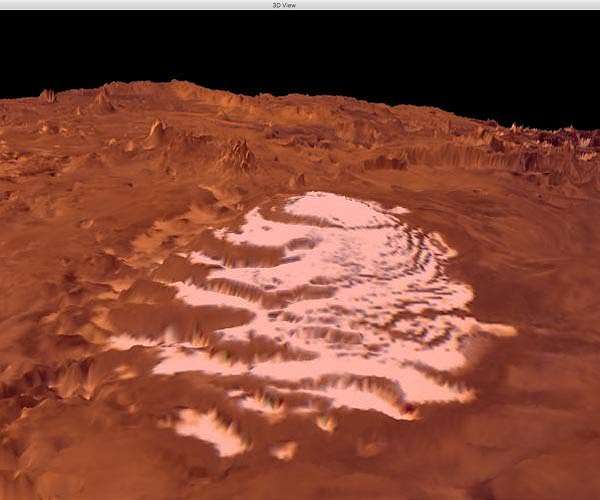Katherine Lutz, a PhD student at the Guarini School of Graduate and Advanced Studies and a National Science Foundation Fellow, embarked on her journey in planetary science by analyzing satellite images of Mars’ polar ice caps. These images revealed spiraling patterns within the ice caps, composed of alternating layers of ice and dusty deposits, ranging from 400 to 1,000 meters deep. Unique to Mars, these spiral formations piqued Lutz’s curiosity. “These look amazing, but do we actually understand why they form or how they evolve over time?” Lutz pondered. Her research, conducted in the lab of Professor Marisa Palucis, an expert in planetary landscape evolution, aims to uncover the mechanisms behind these formations and their broader implications.
The layers within Mars’ polar ice caps offer scientists one of the most reliable climate records for the planet. “Mars has undergone massive climate change, and as planetary scientists, we spend considerable time trying to understand that,” Palucis explained. “The question of how much water has flowed across its surface, and when, has been central to its exploration.”
Previous research in 2013 suggested that the “troughs” might be formed by katabatic winds—fast-moving winds that cause erosion before slowing down and depositing material, leading to asymmetric trough walls and associated cloud formations.
However, Lutz, Palucis, and Earth sciences professor Robert Hawley examined a decade’s worth of new Mars images and data, revealing that while 80% of the troughs were indeed asymmetric, about 20% were not. The troughs on the outer edges of the ice cap formed a more uniform “V” shape, with walls of similar height on either side, and not all troughs were linked to cloud cover.
In a paper published this year in the Journal of Geophysical Research: Planets, the researchers propose that these outer troughs are younger than those at the center of the polar ice cap, likely resulting from heavy erosion rather than a katabatic wind cycle. This suggests that 4 to 5 million years ago, a shift in the Martian climate may have altered the planet’s water cycle, influencing the movement of winds, clouds, and ice.
This finding could explain the differences between the troughs at the center and those at the edges of the ice cap: they formed during different periods under varying climate conditions.
These discoveries are crucial for understanding whether Mars can support—or has ever supported—life. “If we ever want to have people on Mars, we need to figure out the history of this water source,” Lutz said, referring to the ice layers in these spirals. “Could we potentially use it to extract drinkable water? And if we ever want to find evidence of life there now, we’re not going to look at the outer edges of the ice cap, where it’s just a lot of erosion, no water entering the system, and not much heating.”
Lutz emphasized that these ice-cap layers serve as records of Mars’ modern climate. Further modeling is required to better understand the history and function of these spiral features, with the ultimate goal of deploying a rover to Mars to gather more concrete data on the troughs.



